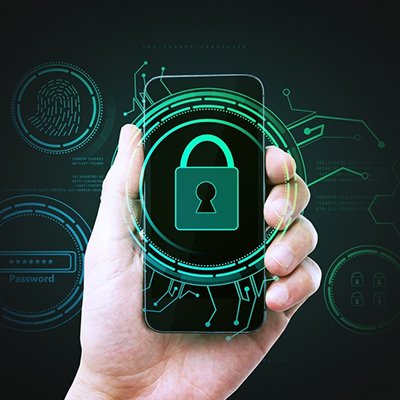 |
| NMMU required a proven, future proof access control security solution that would provide 24/7 protection |
Home to 25 000 students, Nelson Mandela Metropolitan University (NMMU) is one of the most culturally and linguistically diverse Universities in southern Africa. It offers a wide range of programmes, hands-on work experience and home-from-home accommodation. The University campus, the largest in the southern hemisphere, is located four miles from the city centre of Port Elizabeth, the fifth largest city in South Africa, and is virtually surrounded by sea and coastal sand dunes.
Effective key control had long been an issue and there were also on-going problems with the existing access system as well as its limitations in terms of hardware and software upgradeability and integration. Wishing to address these shortcomings the University began to investigate how they could upgrade their security with a more capable system whilst utilising as much of the existing lock hardware as possible to minimise both costs and disruption to the fabric of buildings during any subsequent upgrading.
The XS4 access control solution designed is made up of Mifare proximity controlled E9450 electronic escutcheons in offline as well as wireless online models |
SALTO Systems was selected from several other access control suppliers for this major contract. The first 30 units have just been installed into lecture venues, computer labs and offices by SALTO's southern African distributor Vision Systems SA, with a further 30 currently being fitted. An additional 44 doors will be equipped in a brand new building in June with substantial numbers of additional doors into existing areas following on from this as budgets allow.
"The management of students and staff is crucial for the University so this was the key application for the system, and NMMU required a proven, future proof access control security solution that would provide 24/7 critical security protection," comments Johan van Steijn, Managing Member, Vision Systems SA.
"To achieve it a secure solution was needed to provide everything that a hard wired system would deliver but more cost effectively and in a mix of online and offline stand-alone wire free formats. The aim was to create a keyless campus with a solution that could not only manage the large number of doors on campus now but also grow to handle their future requirements too."
"A key part of the contract was that the chosen system had to be capable of integrating with the Universities own custom in-house software programme which is essentially a facilities management system with an active directory. This incorporates all the information about the students and staff, and includes where they can go and when, timetables, other systems etc."
"So, working in consultation with NMMU ICT Services Facilities Planner Jacques Wessels, we planned a highly secure and flexible access control solution that could not only be retro-fitted to most doors throughout campus but could also take the software integration requirement in its stride too."
The NMMU and SALTO access control software were fully integrated and all the students and staff were imported onto the central database |
"The XS4 solution we designed is made up of Mifare proximity controlled E9450 electronic escutcheons in both offline as well as wireless online models, PB112S and PB112S-SV online power supply boxes and WRM9001 & 9001FS wall readers."
"This is currently split 50:50 between online and offline doors as the installation has started with high risk areas with high traffic volumes. Some of these doors consist of perimeter or main entrance doors so we are building towards going offline internally with some external doors being wireless online. This means the ratio will therefore change quite rapidly," van Steijn continues.
The system provides a totally wire free networked electronic locking solution that uses distributed intelligence to pass information between microprocessors in the electronic handle set and the key card. Besides the door hardware, the heart of the new system is its SALTO Virtual Network (SVN) software. This enables the locks and key cards to be updated remotely and access profiles to be changed rapidly. It also eliminates the physical restrictions of more traditional stand-alone electronic locks and has been seamlessly integrated with the in-house software without compromising its ability to allow key cards and locks to be updated, restricted or deleted remotely.
The ‘smart' key cards, which are currently standard prox cards but due to be replaced by combo cards shortly, also serve as student and staff ID cards complete with photo identification and cashless vending capabilities, build up 'on-card' audit trails through normal use giving NMMU complete control over access and enabling them to track the movement of students and staff across campus through both the offline and online parts of the system if required. This enables a complete access profile of each individual to be established and updated as necessary at perimeter located ‘hot spot' wall reader points.
If a card should get lost or stolen it can be quickly and simply deleted from the system just by visiting the readers with up-dated cards. This greatly reduces the number of visits necessary to offline doors, since user data is simply transferred on cards by normal use. This eliminates the traditional need to replace locks if security is breached due to the loss or theft of a key card.
Result
SALTO's southern African distributor Vision Systems SA installed the access control solution |
Within a week of installing the system, the NMMU and SALTO software were fully integrated and all the students and staff were imported onto the central database.
Now when a new student registers, their information is synchronised and appears in the SALTO software. A key card is issued and when this card is presented to a lock, the system accesses the database to check where the user can go and when. It will also check that they have in fact entered a computer lab say using their card prior to allowing them to log onto a computer lab PC etc. Thus the system will fully automate the management of users and their access plans.
Jacques Wessels concludes: "Controlling access is extremely important for our University. Although our SALTO installation is brand new, we are impressed enough to have made a policy decision to use the system from now on. Integration between the two software systems was extremely straightforward and we have now got the ability to auto lock and unlock rooms, set user time zones and manage and update access rights at will with none of the problems we had with our previous system."


